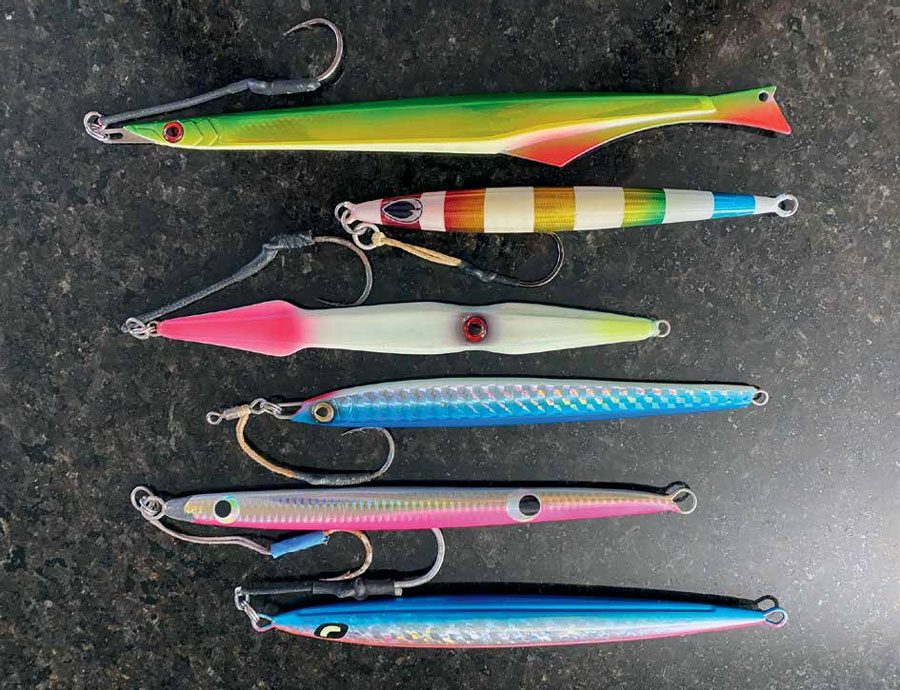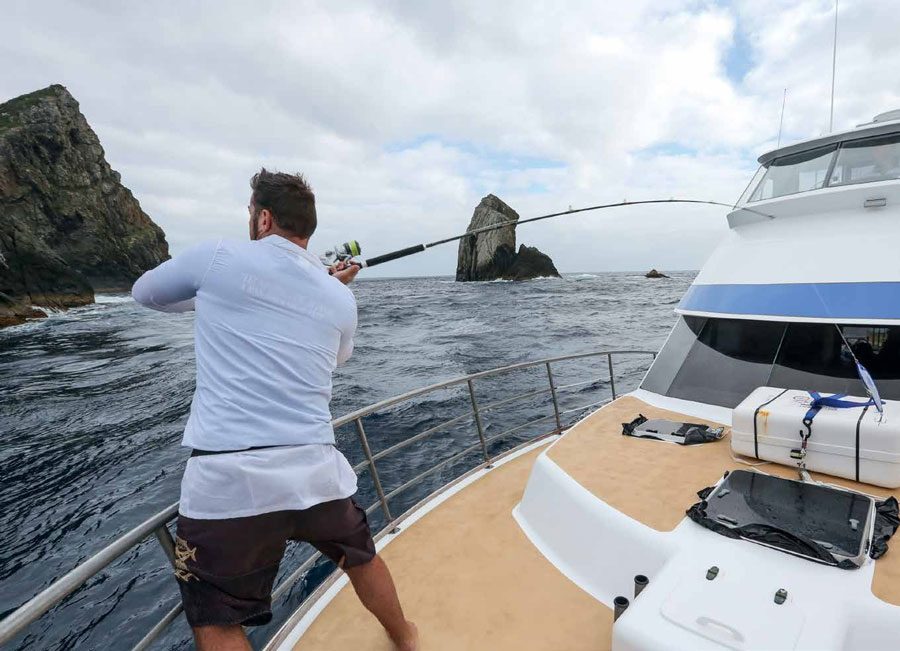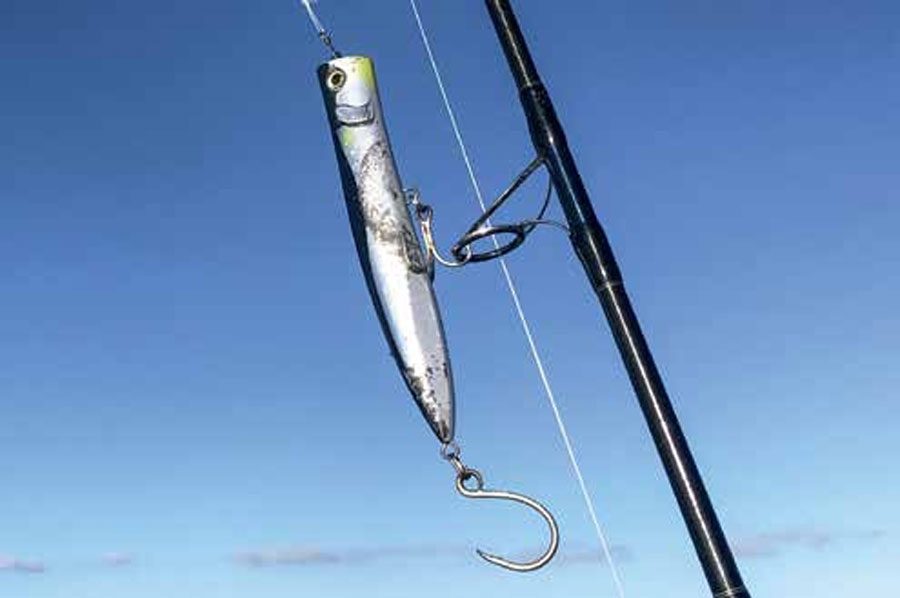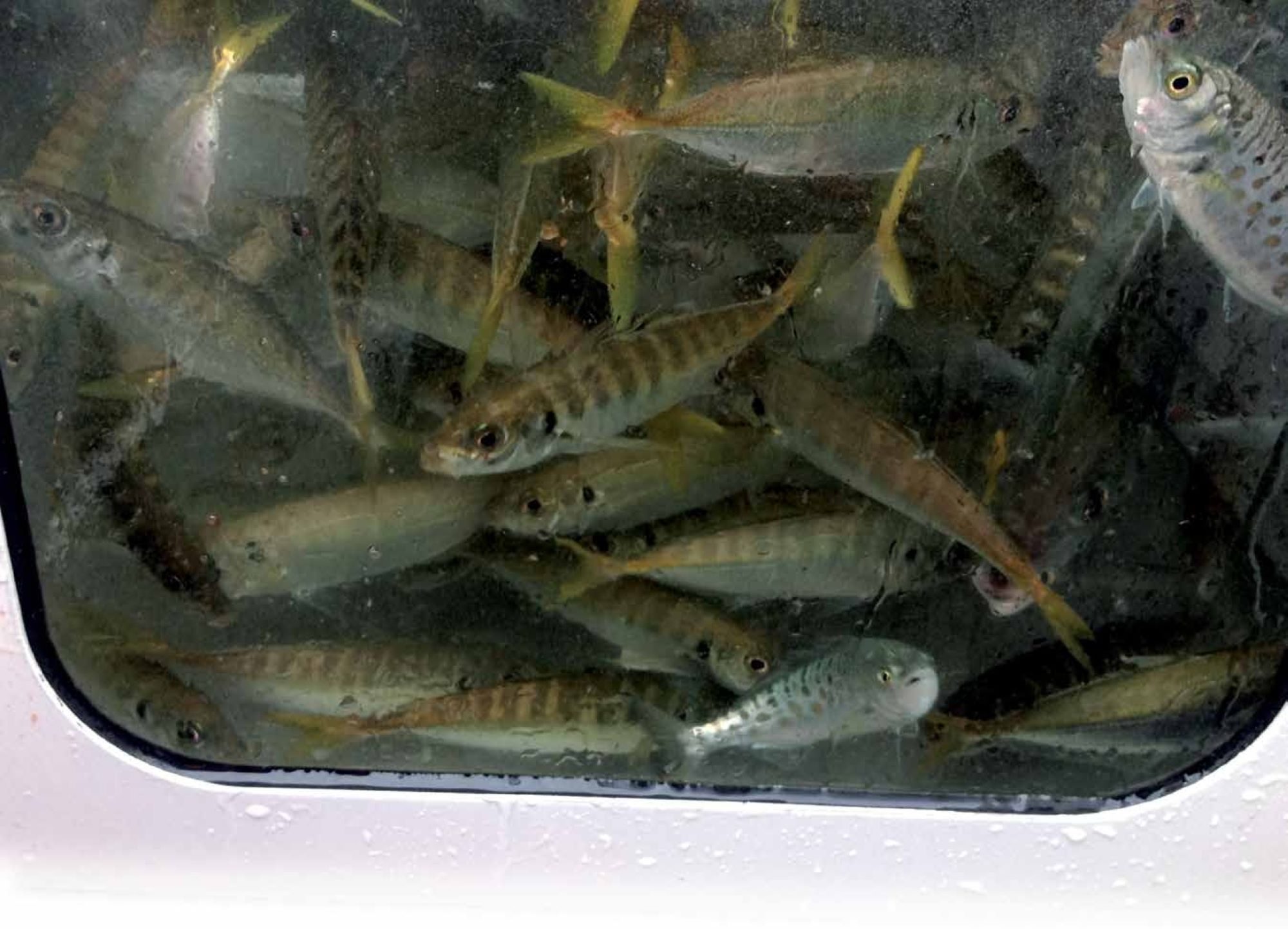

Catching a decent kingfish is a dream for many anglers – and once you feel that immense power through the rod and line you’ll understand why!
While the use of a live bait is potentially the most effective way to attract and hook kingfish, lures are often more convenient. Unlike live bait, they can be rigged up so they’re ready to go at a moment’s notice.
However, if your lure is not presented on suitable trace material, the chances for success are greatly reduced. Go too heavy and your lure’s action will be hindered, too light and there’s a good chance you’ll lose both the lure and the fish – kingfish are notoriously dirty fighters!

The following are my leader/trace recommendations for the more popular kingfish lure styles:
TROLLING BIBBED AND BIB-LESS MINNOWS
The first rule is don’t go too small with your trolled offerings. Sure, big kingfish will eat small lures, but so do lots of juvenile models (not to mention hungry kahawai). Kingfish at any size are strong and active, including the youngsters, making them very hazardous to unhook, so it’s best to avoid catching the small ones.
Choose lures at least 180mm long to deter all but the most determined of undersized kings, with 200-240mm typically favoured, especially since larger lures also tend to put out more vibration and flash – and they run better at higher speeds.
Make up a leader that’s appropriate to the lure. Around two or three metres of nylon (ideally proper leader material rather than a short section of mainline) or fluorocarbon trace material will do the job nicely. The latter tends to be more abrasion resistant and is harder to see underwater, but fluorocarbon is stiffer and harder to knot.


Do not use wire as it’s more obvious underwater.
The thickness of the trace is determined by the lure size – they need to be relative to one another. If the trace is too heavy (thick), the lure’s action will be adversely affected, especially if the method used to join the trace to the lure is also bulky. In general, a freshly-tied Uni-knot will work fine, but small crimps are a good option that’s less likely to lose breaking strain over time, as knots tend to do.
80lb (37kg) leader material will sort most situations, with only the largest lures and gnarliest territory requiring 100lb (45kg).
Most anglers will use a strong but compact ball-bearing swivel to connect the trace to the mainline, but I sometimes place my swivel just a metre ahead of the lure, add another two or three metres of trace and then join that to my braid mainline with an FG knot. FG knots are slim, strong, and reliable when well-tied.

CASTING POPPERS AND STICK-BAITS
Top-water lures are so much fun to use, attracting crashing strikes on the surface.
Again, using the larger 190-240mm top-water lures helps avoid undue attention from ‘rat kings’. These should be rigged on specialist 80-100lb nylon or fluoro leader. On days when the fishing is tough, leaders of just 60lb may be required to get strikes, even on 180-190mm lures. To avoid bust-offs, such light leaders should only be used in areas where the bottom is relatively clear.
A relatively long leader is definitely an advantage, despite the hassle of tying strong, slim joining knots that slip easily through the guides when casting.
Not only does the trace’s extra thickness and abrasion resistance help when a kingfish drags your gear into the rocks and kelp, it can be used to help control the fish boatside, and even help lift it into the boat.
I like to use four to five metres of nylon trace (fluoro is springier and harder to control) tied to my braid mainline with an FG knot. An FG knot will fail if poorly tied, and even well-tied examples can become loose after rattling through the guides over a long, fruitless casting session. A PR knot is a better option since it seldom unravels, but it takes longer to tie and requires the use of a bobbin.
My solution (99 percent of the time) is to deliberately leave the FG knot’s tag-end trimmed long, so it’s less likely to unravel. I pull on it regularly to ensure the knot stays tight.
How the trace is tied to the lure can be tricky, too. Ideally the attachment point you’re tying to should be of thicker diameter than the trace to prevent the knot biting into itself under pressure. But that’s often not the case.
So instead, tie on the lure using a Rapala Loop knot (also known as Lefty’s Loop knot). This knot is strong, can be tied in thick trace material, and allows the lure maximum movement.
Otherwise check out the range of Mustad Fastach clips, (ideally those without the added swivel). They can be a bit fiddly to deploy, but they’re strong, reliable, allow plenty of lure movement, and anglers can change lures without cutting and re-tying traces. Tie them to the leader with either a Loop or Uni knot.

USING JIGS
The usual rules still apply: choose the lightest (thinnest) nylon or fluoro trace practicable for the size of the jig being used also taking into account the seafloor you are fishing over (foul ground equals heavier traces).
My leaders are longer than most other anglers use – the extra insurance this provides over rough ground gives me added confidence and helps me maintain control over the fish boatside. Again, the leader is tied to my braid mainline with an FG knot, the tag-end left long.
Most kingfish jigs these days have an assist-hook rig deployed from the wire loop at the top of the lure. The trace should be tied using a Uni-knot to the assist rig’s solid ring rather than to the split-ring or the lure’s wire loop, as these can fail. Or use a high-quality clip such as a Fastach. Just be aware that using clips can be risky as many clip options regularly fail when jigging!
As kingfish will readily take a variety of jig sizes, here is a basic leader guide to get you underway:
80-100g: 30lb (only over clean bottoms);
120-150g: 40-50lb;
180-200g: 60-80lb;
250-300g: 80lb;
350-400g: 100-120lb.
Tight lines and big kingfish everyone! BNZ





